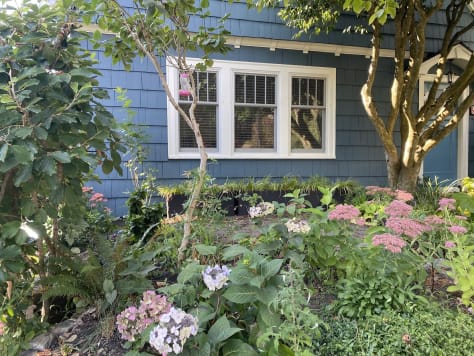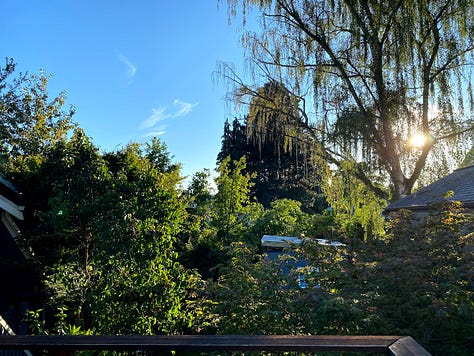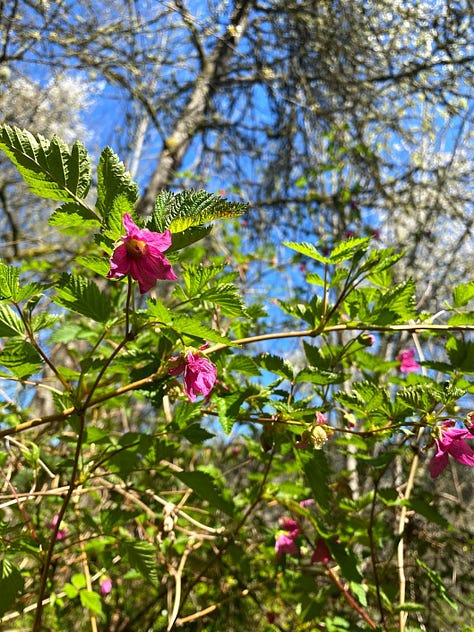Finding a Partner — In the Garden
When you can't do it all, finding help should include a shared vision
Good morning! It’s Monday so of course even though this is a holiday week with the Fourth of July coming this Thursday, there are still things to get done. Our family has a lot on our plate with summer little league and visiting family as well as the final preparation for a move. We also recently put our house on the market, but ultimately decided at this time it’s a better idea for us to rent out the house for the next year.
My Garden is Not a Mow and Blow
While getting the house ready for sale in March before most of the perennials were even peeking out very much, our realtor hired a contractor to “neaten things up” and lay down some mulch. The mulch was a good idea - it definitely suppresses weeds at that time in the spring when everything is just beginning to seed. But the problem with “mow and blow” type of operations are that they’re ruthless when it comes to cutting back anything that isn’t obviously a shrub to be manicured or a lawn. I have a small native plant area in a shady area; delicate dahlias that poke through the soil and many plants that only a trained professional or a passionate home gardener would recognize as valuable in a certain context.



While in June a Seattle garden can feel almost overwhelming in its exponential growth as the rain and longer days power all the plants into maximum growth mode. I was sad to see that our Chaste Tree (Vitex agnus-castus) was completely cut down to the ground. But it’s making a comeback, and I know it’s a very hardy plant that will get back to the size I’d like it to be in 2-3 years.
Network, Get a Referral, Make a Match
My friend is in a horticulture program at a community college and I chatted with her about finding the right care for a cottage garden. She told me about a classmate of hers and I got his contact information.
In addition to the fact that I have a lot of mature plants that are established and really just need clean-up and occasional watering, I try to find plants that don’t need to be constantly watered in the summer. This has continually challenged me because the Pacific NW along with so many other areas of the country is facing increased temperatures from a changing climate. Just 5 or 10 years ago I didn’t have to water very much, but now I have to continually monitor previously self-sufficient plants for months at a time during the hottest part of the summer.
I mentioned a native plant area that I have in the shade, and in general I do adore native plants that are interesting and not too hard to maintain. The guy I found knew just how to care for an prune many of the plants I showed him over the half hour we were in the garden, which was both a relief and reassurance for leaving my garden in the care of someone else.
We also talked about maintenance - a garden in the Seattle area has phases of growth. The spring is always a very intense time, but once the sun and dry sets in many plants go dormant, from the grass to many of the perennials. Then there is another general clean-up in the fall when leaves, dead branches and general putting the garden to bed takes place. We have some general ideas about a schedule but it won’t be exactly every week or two as it would be if he were just going to mow grass and clip hedges.
Gardening is a Lifestyle, but Know Your Limits
For a long time I thought I could do it all, and I did for the most part. In retrospect some of my regular maintenance tasks and keeping both the front and back yards in check was pleasurable, but kept me from dreaming bigger. Now with the assistance from a garden companion of my own, I feel like I can take more control of my time and regain a sense of pleasant peace rather than feeling overwhelmed.
What do you do to manage your garden during the massive growth spurts?
If you enjoyed this article or think it might be useful for a friend or family member, please share!






Your garden looks so pretty!